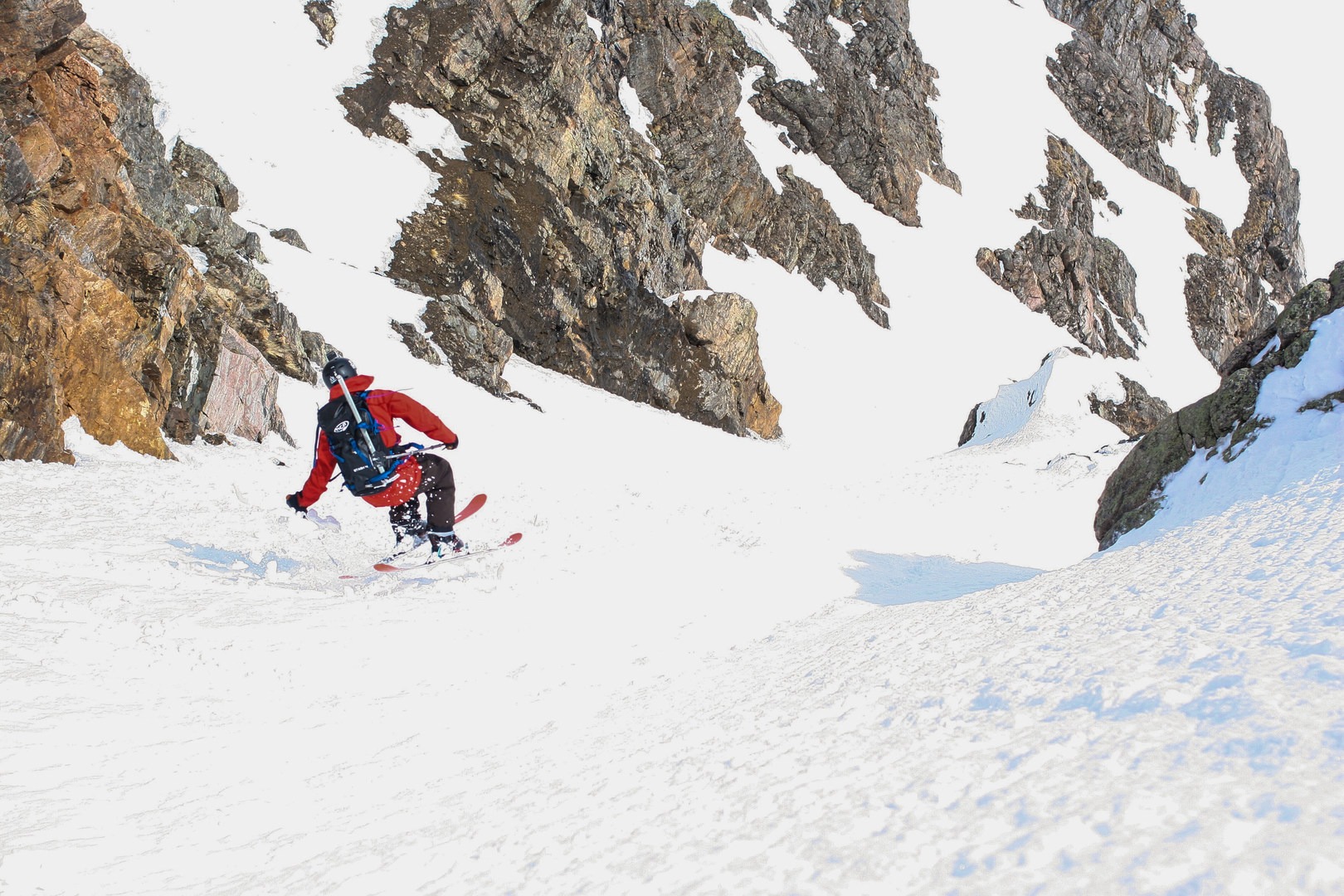You are here
Many people in the Front Range are familiar with Saint Mary’s Glacier, which offers a short hike to a picturesque lake and a perennial glacier to boot. Those who are properly equipped frequently quest up the glacier to the tundra above and access the Continental Divide Trail as well as stunning views. Late into the spring, James Peak frequently populates the snow line for the Rocky Mountains. Standing on the summit looking east, the topography blends with the horizon line as the flat expanse fades into the distance. The horizon line due west is scattered with jagged snowcapped peaks that seem impenetrable.
The Shooting Star Couloir, located on the northeast aspect of James Peak, does not come into full view until you are standing on top of it. From the approach, it is difficult to decipher which line is which, except for Superstar, which faces directly at you from its position on the south aspect.
From Saint Mary’s Lake, skiers can continue up the glacier traveling past the bench and toward the apron of the south aspect of James Peak. A relatively low-angle ramp guides you straight up to the summit block. As you gain elevation, you are unwittingly passing a variety of technical and moderate descents off of the northeast face. Although relatively accessible from the ridge, a safer and more manageable approach to these descents can be accessed by boot packing via the cirque below.
You can never have too much information here, and it is advisable to continue past the summit a short distance to try to gain a bird’s-eye view of the remainder of the line. As conditions shift, coverage may change as well and require additional recon before a safe descent can be made. While scoping the bottom tier of the Shooting Star, you navigate large cornices over a substantial drop to the drainage below, and a rope and partner is required to keep you safe.
The Shooting Star Couloir is accessed directly off of the James Peak summit at 13,301 feet. After gaining 2,585 feet of elevation, a nice, flat platform awaits with panoramic views and the entrance to the Shooting Star descending northeast, right off of the summit block. The technical crux of the line comes right at the beginning with a slope angle that approaches 60 degrees, depending on conditions. Its narrow walls mandate jump turns right off the bat, maintaining the pitch for the next hundred yards. The line gets progressively wider and gentler until it doglegs left and you approach the exit. Use care when traversing and descending above substantial cliffs.
As you approach a break in the cliff, you intersect the descent of Superstar on the south aspect of the northeast cirque. From the intersection you have to ski carefully and mitigate your sluff as you descend above multiple cliff bands. Exiting onto the apron, you shift from precise, technical turns to wide open carves as you exit avalanche terrain and into the cirque below. Stop at the bottom to appreciate the technical and somewhat exposed line before applying your skins to tour back out.
If you are looking directly at the northeast face of James Peak, on your left is a ramp that is the easiest exit out of the cirque and back onto the James Peak apron, returning on the same path you approached on.
Score your last alpine corn turns as you maintain your speed to cover as much distance as possible on the bench. Late in the spring you will have to navigate bare sections while stringing ribbons of snow together as much as possible.
Remove your skis and walk until you approach the top of the glacier, where you can snag the last series of turns descending back to the lake.
A classic line in the Front Range, the Shooting Star Couloir demands expert level skiing abilities and careful snowpack and weather assessment to complete safely. Always make sure both you and your partner feel comfortable before beginning the descent.
Logistics + Planning
Current Weather: Powered by Dark Sky






























Comments
Sign In and share them.